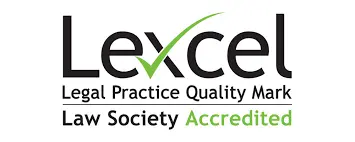Hidden Disabilities in the Workplace
If an employee were to break his/her leg, an employer would straight away know how to deal with the situation including what to say, for example, “Get better soon!” However, when it comes to “hidden disabilities” employers are often left wondering what to say or do. There also tend to be a lot of myths associated with hidden disabilities, for example, people often believe that dyslexia negatively affects intelligence, which it most certainly does not!
Potential “hidden disabilities” in the workplace include:
- mental health issues such as depression, anxiety and PTSD;
- dyslexia, dyspraxia, ADHD and autistic spectrum disorder (“neurodiversity”);
- diabetes;
- arthritis; and
- epilepsy
The covid-19 pandemic has really brought hidden disabilities to the fore. It is fair to say that there has been a huge increase in people suffering with mental health issues. Employees with health conditions such as diabetes have had to “shield” and as some businesses started to return to the office (before the recent Government advice changed), some employees might have refused to do so due to fears about covid-19. Dealing with “hidden disabilities” is particularly tricky and there are many pitfalls to be aware of.
For an employee to benefit from the various legal protections under the Equality Act 2010, they must meet the legal definition of being “disabled”, which involves showing that:
- he/she has a “mental or physical impairment”;
- which has a “substantial adverse effect” (this is a low threshold);
- on his/her ability to carry out “normal day-to-day activities”; and
- such impairment has a “long-term effect”.
It is really important for an employer to obtain medical advice in relation to any employees who may class as disabled to ensure that the appropriate steps can be taken and to avoid the risk of claims. Employers must not adopt stereotypical assumptions about any medical conditions.
Employers may be surprised to learn that they can in fact be liable in situations where they were unaware of an employee’s disability. For example, if a business has a policy of requiring all staff to arrive at the office at 08:00, this would potentially place employees with depression at a particular disadvantage, giving rise to a potential claim for indirect disability discrimination. This is one of the many reasons why it is a good idea to have an inclusive environment in which employees feel able to disclose any disabilities so that the appropriate adjustments to policies/practices can be made.
Once an employer becomes aware of a potential disability, one of the key required actions is to consider whether to make reasonable adjustments for the employee, which is something that Access to Work can assist with.
The duty to make reasonable adjustments falls squarely on the employer and is triggered in three situations, which include where a disabled employee is put at a substantial disadvantage. For example, a requirement for a dyslexic employee to complete handwritten paperwork within a limited timescale is likely to put a dyslexic employee at a substantial disadvantage compared with non-dyslexic employees due to the difficulties faced by dyslexic individuals with writing, reading and spelling. The employer is then required to take reasonable steps to avoid the disadvantage, for example, by providing speech-to-text software. Whether an adjustment is reasonable or not involves an assessment of various factors, including the financial cost of making the adjustment and the size of the employer. This duty places a positive duty on the employer to treat disabled employees more favourably. Reasonable adjustments can be as simple as providing typed notes in large font and providing minutes of meetings “expeditiously”, both of which Starbucks failed to do in our successful dyslexic client’s case (Miss Kumulchew v Starbucks Coffee Company UK Limited).
An employer must also take care not only to treat the employee less favourably because of his/her disability (i.e. direct discrimination) but also not to treat the employee unfavourably because of something arising in consequence of the disability (i.e. discrimination arising from a disability). For an example of the latter, if a dyslexic employee were to continually make errors in his/her work and was then subjected to capability procedures as a result, this treatment is likely to be unlawful unless it can be justified as being a proportionate means of achieving a legitimate aim, which would be unlikely if adjustments had not been made or considered.
Disability discrimination is a complex area of law and it is essential for employers to be aware of the relevant law/issues to avoid tribunal claims, the compensation for which is unlimited. Register for our webinar from 10:00 to 11:00 on 8 October 2020 to learn more!
Jenna Ide, Senior Associate









Leave a Reply
Want to join the discussion?Feel free to contribute!